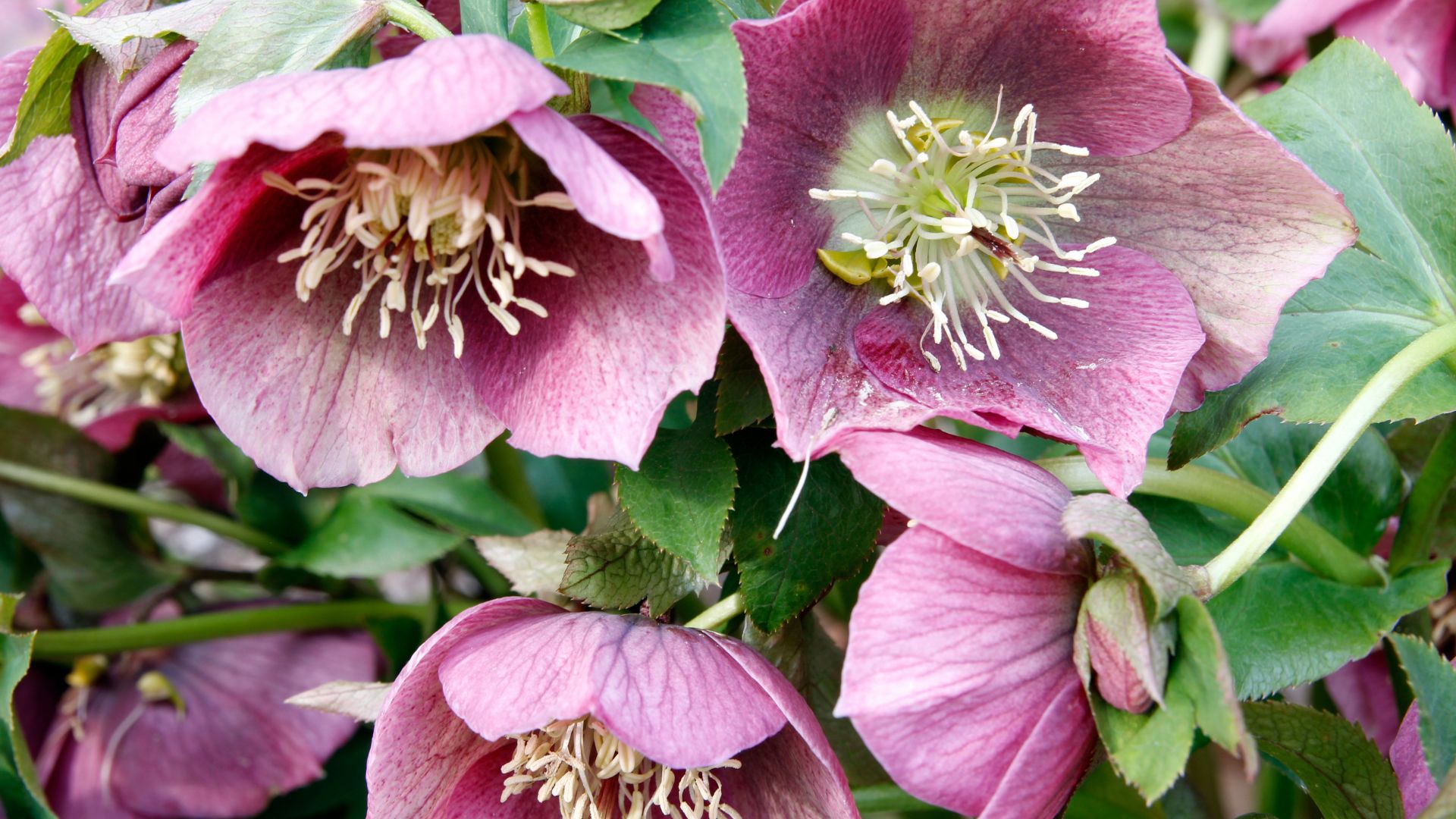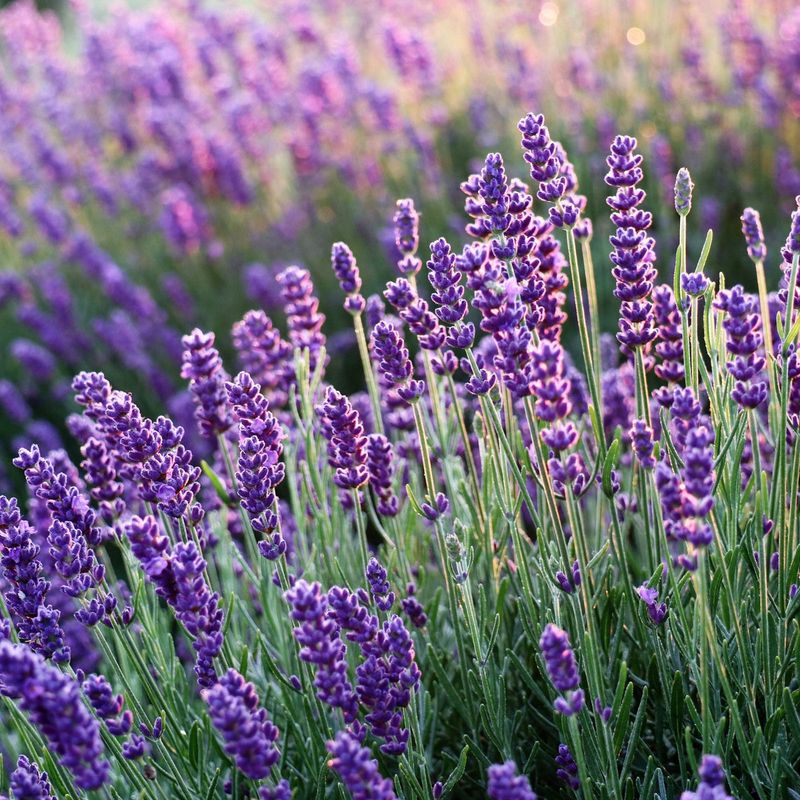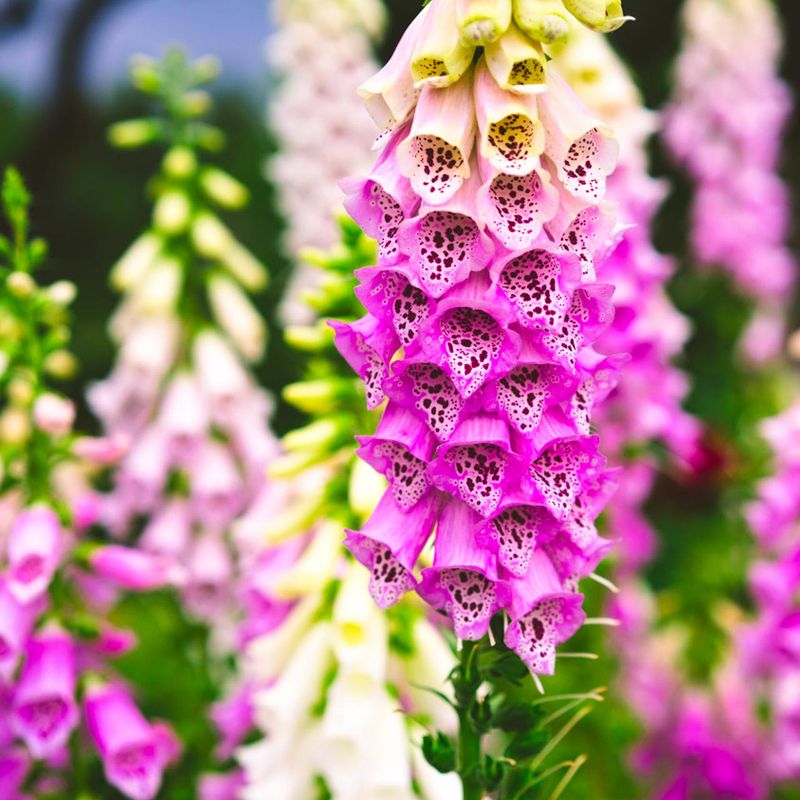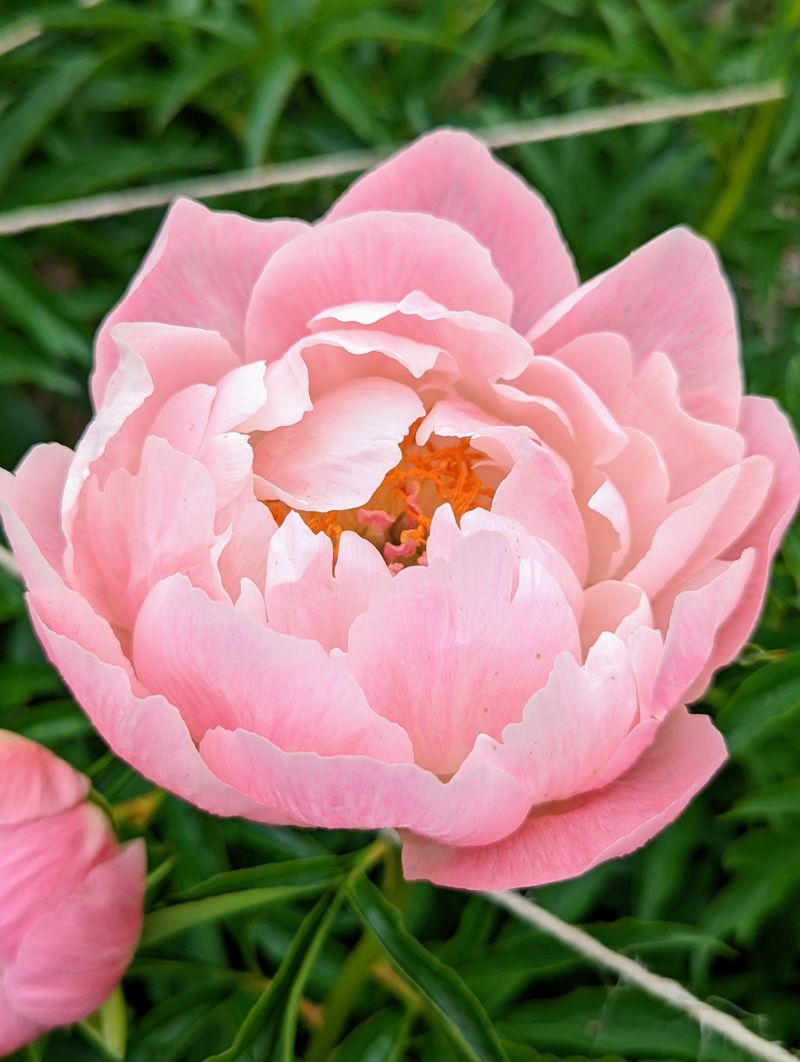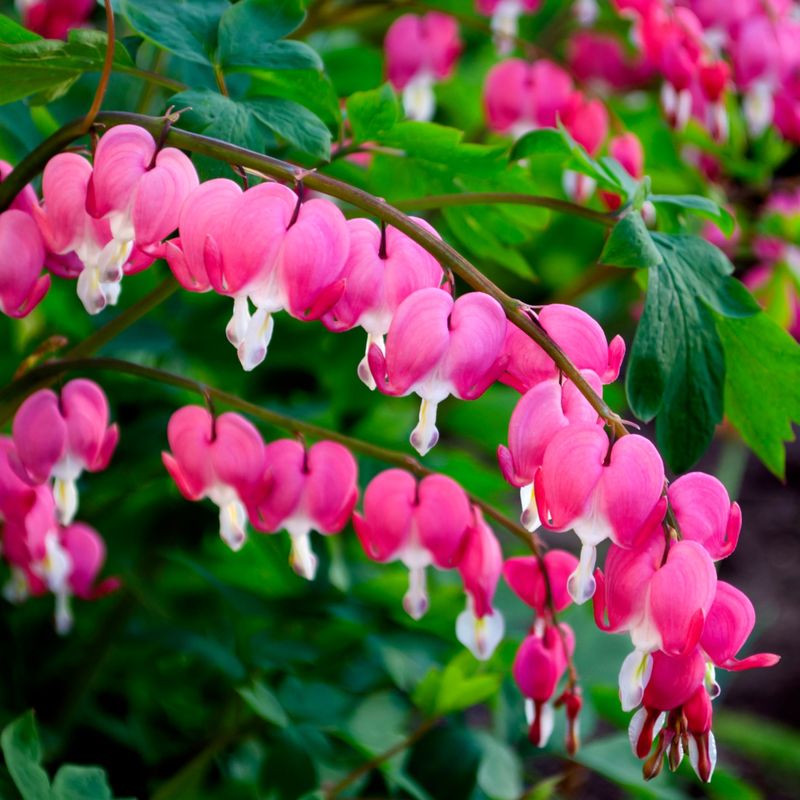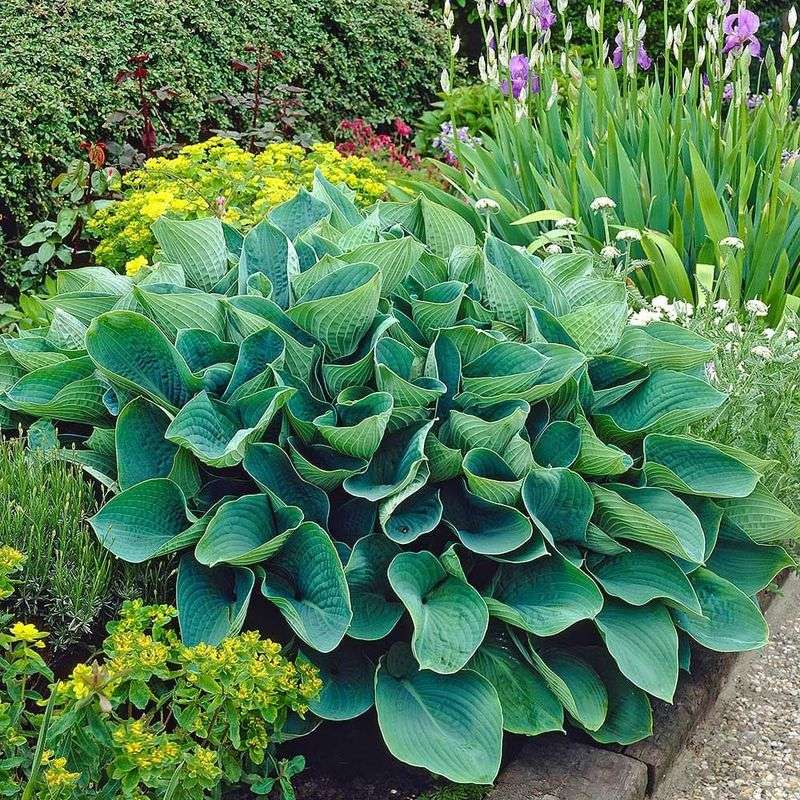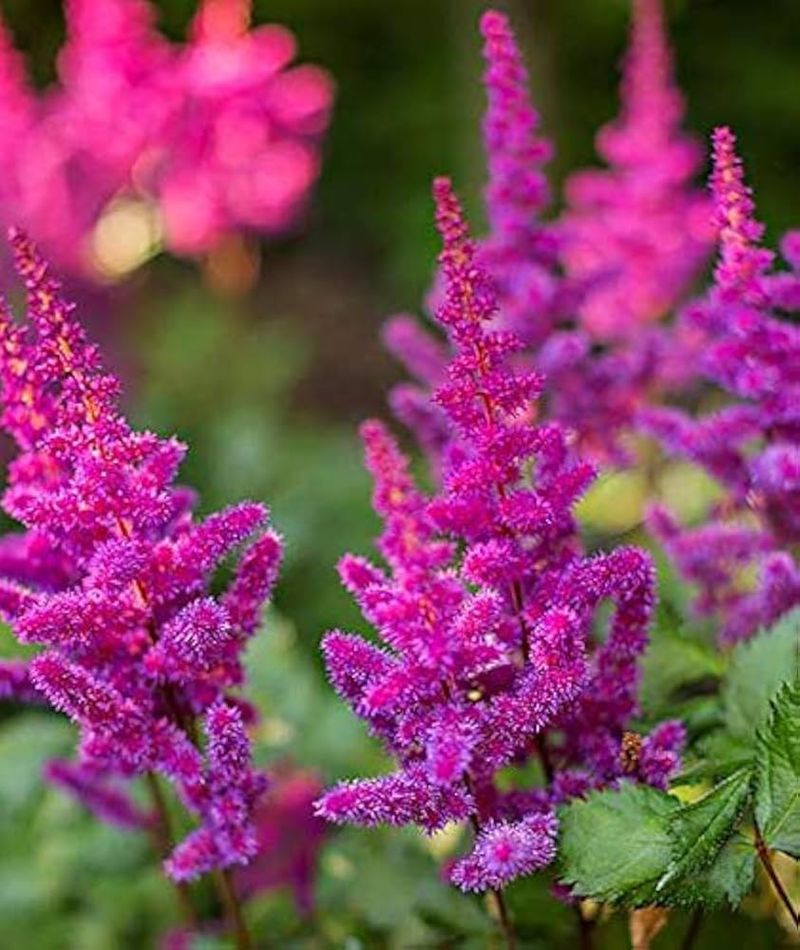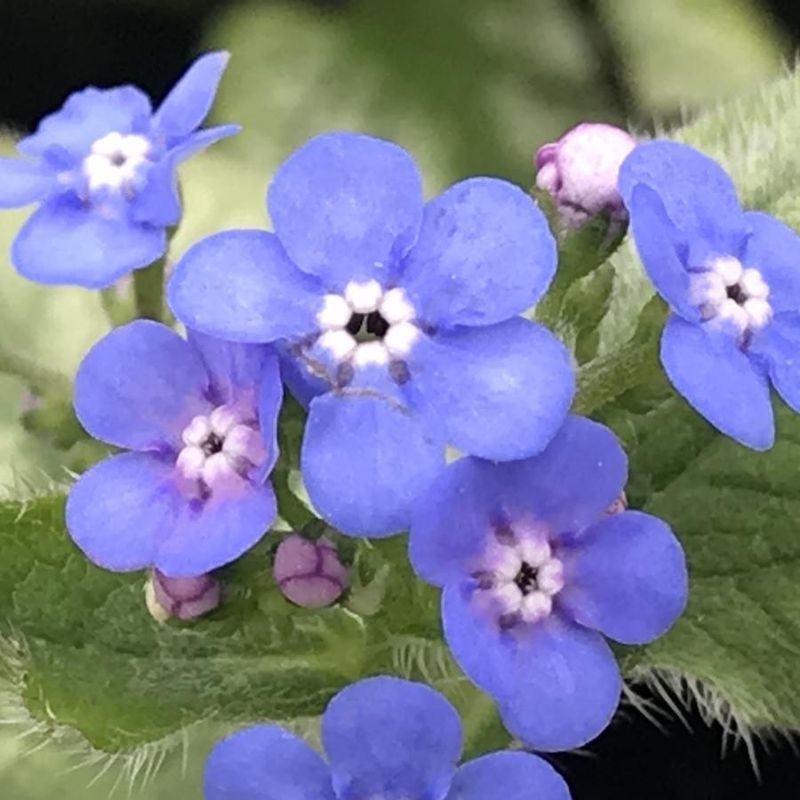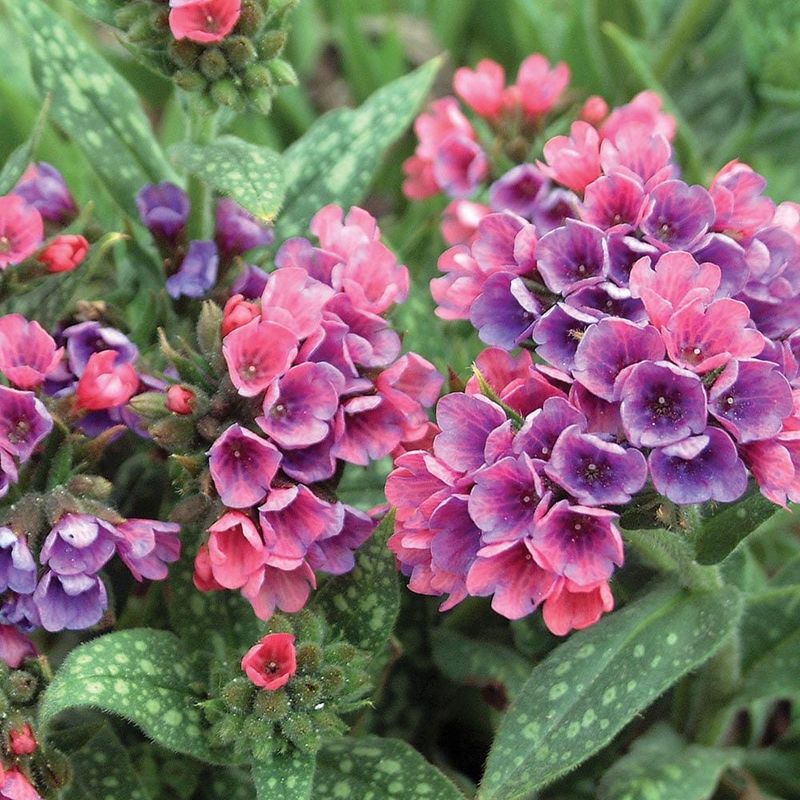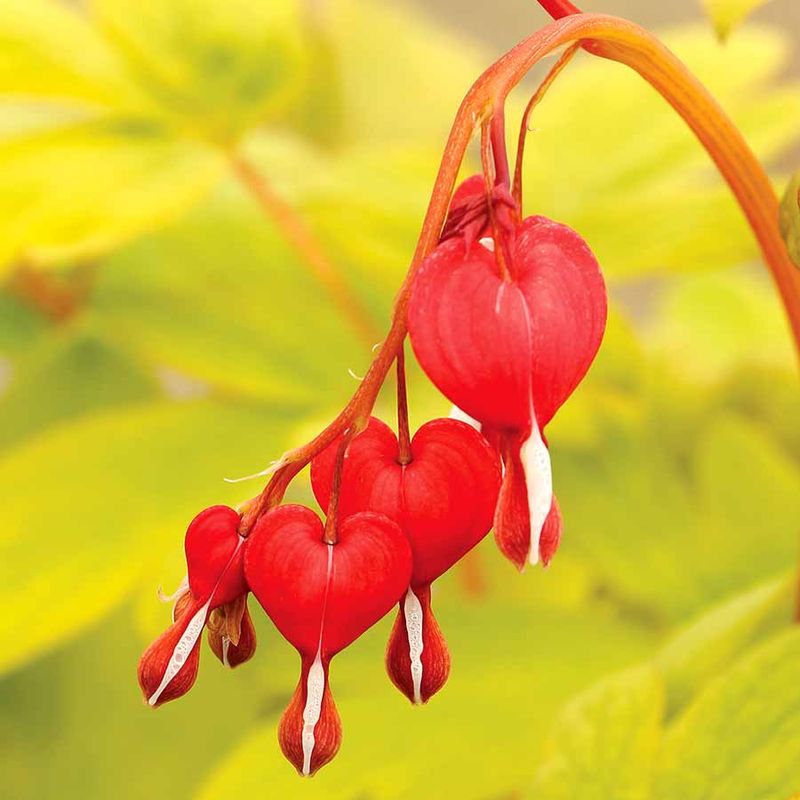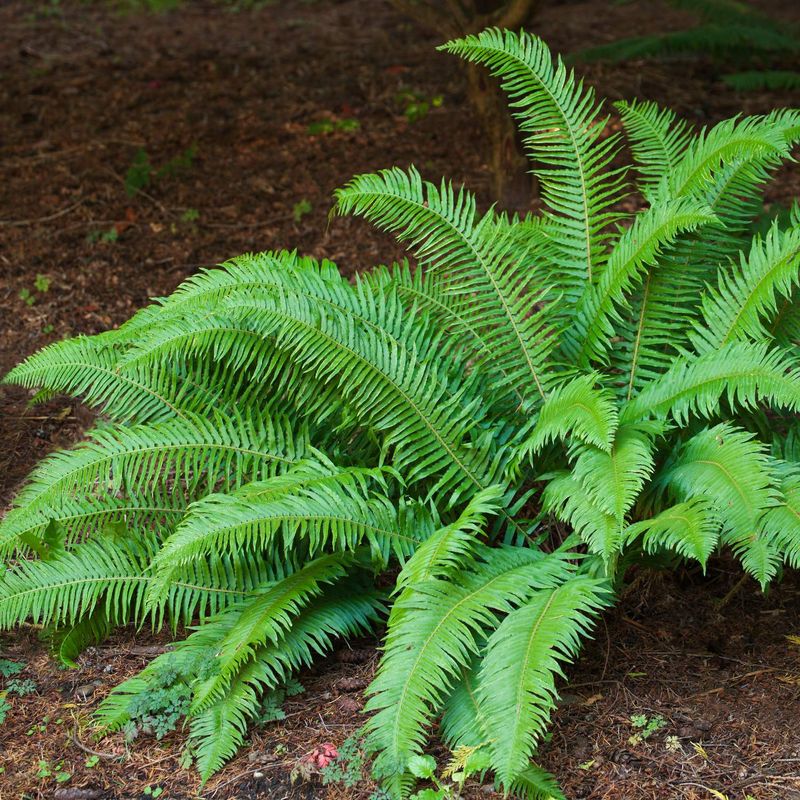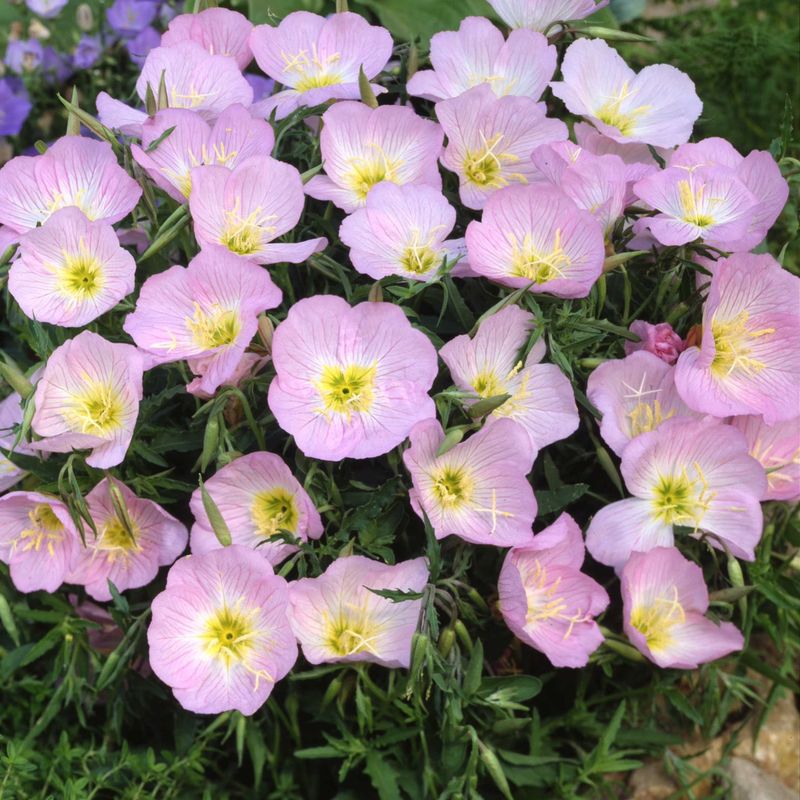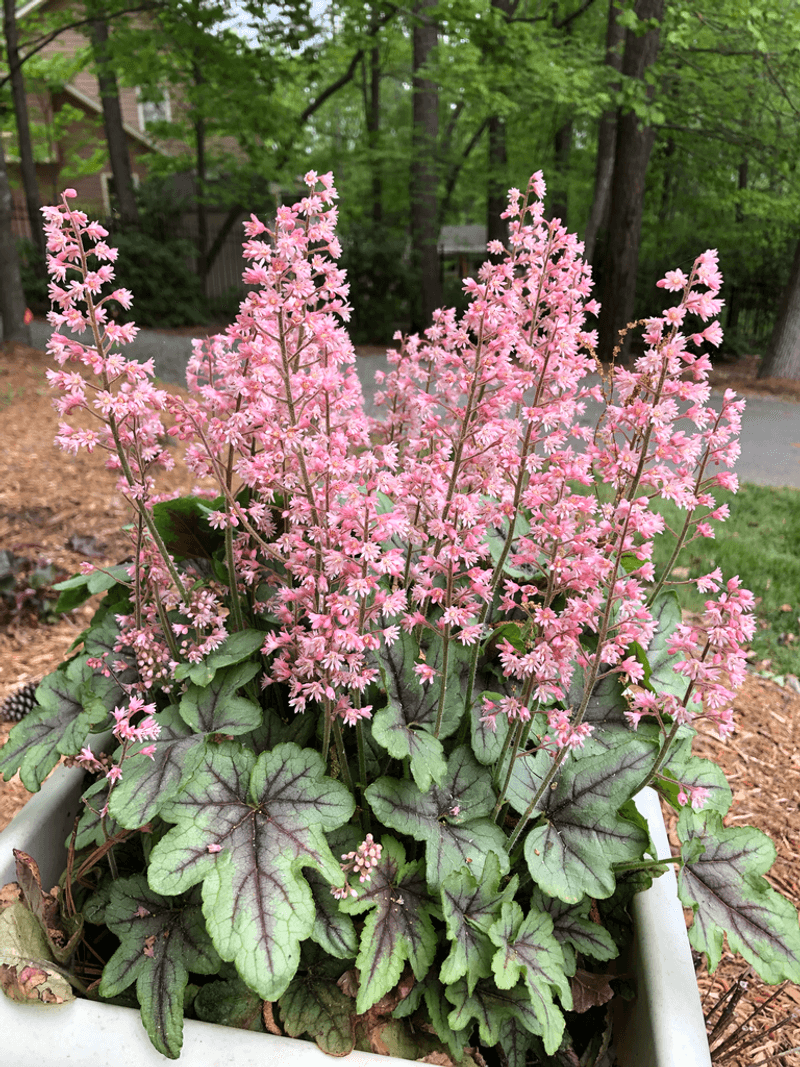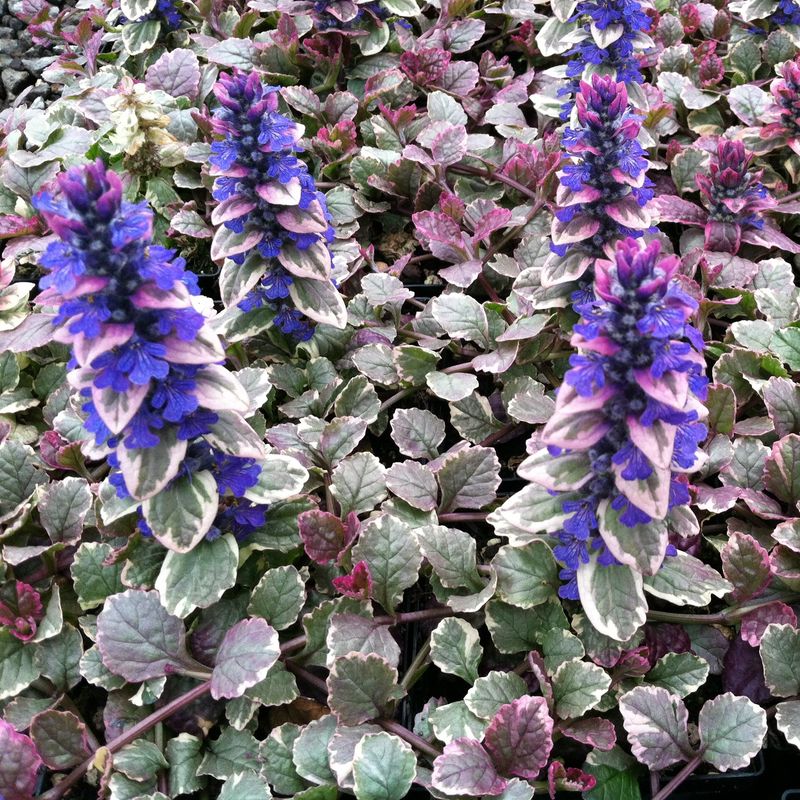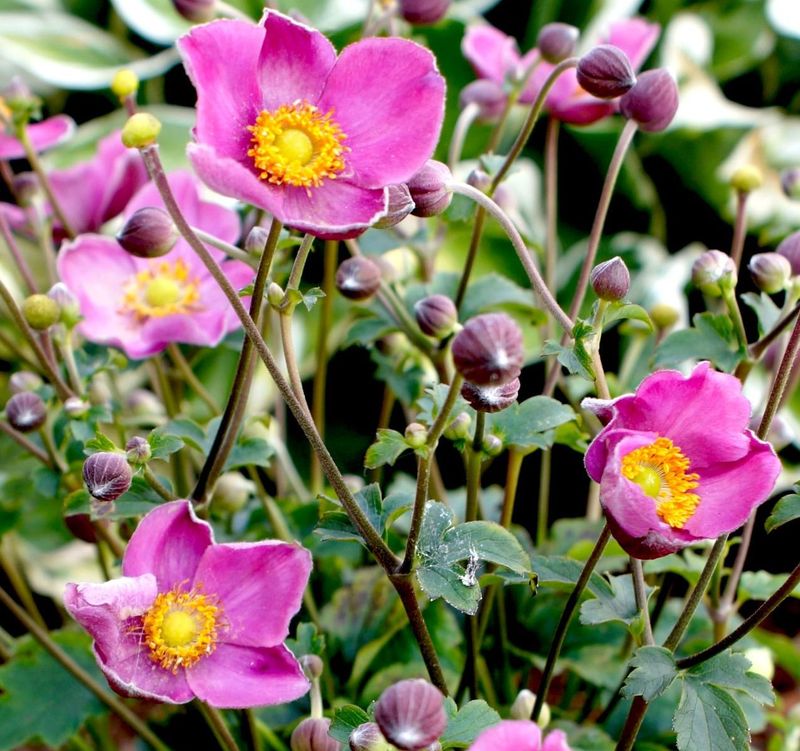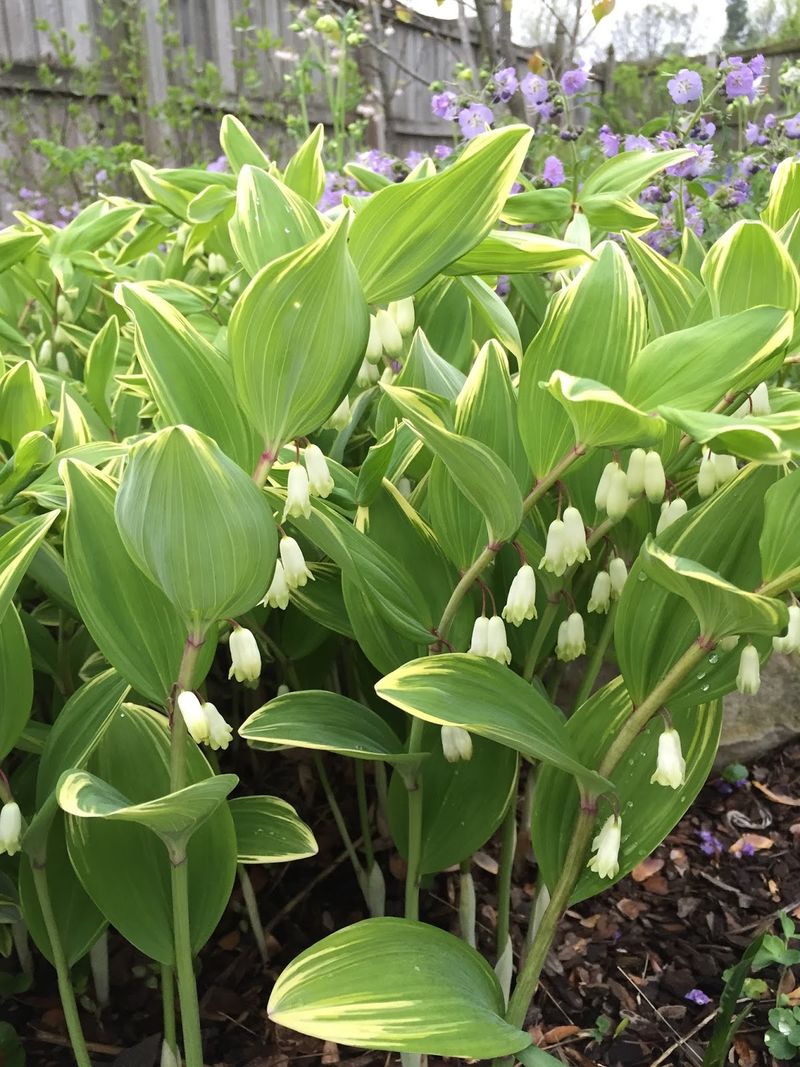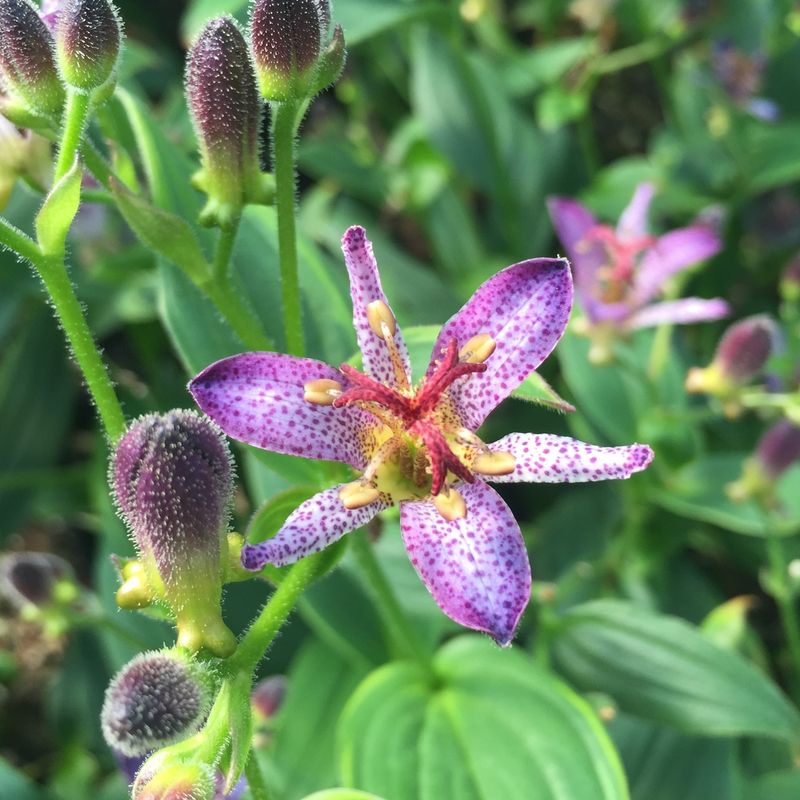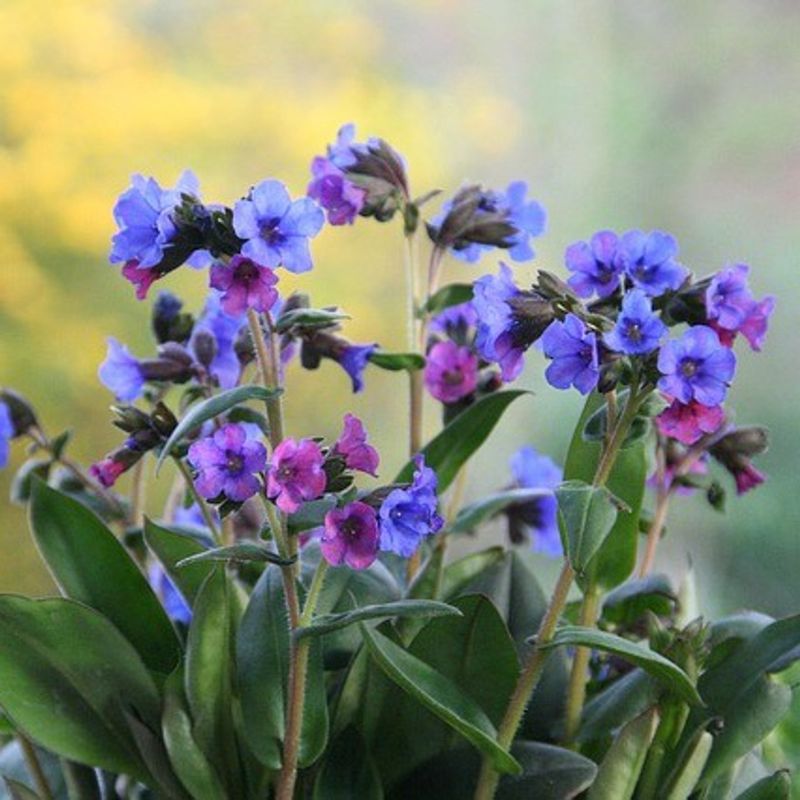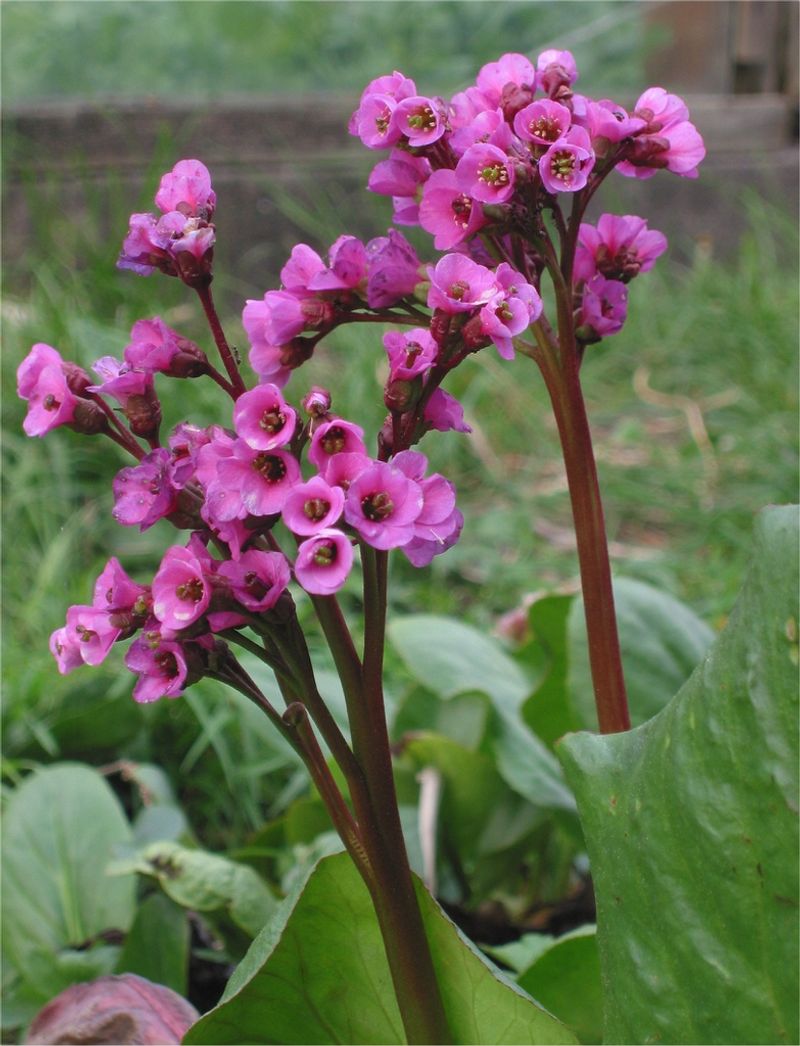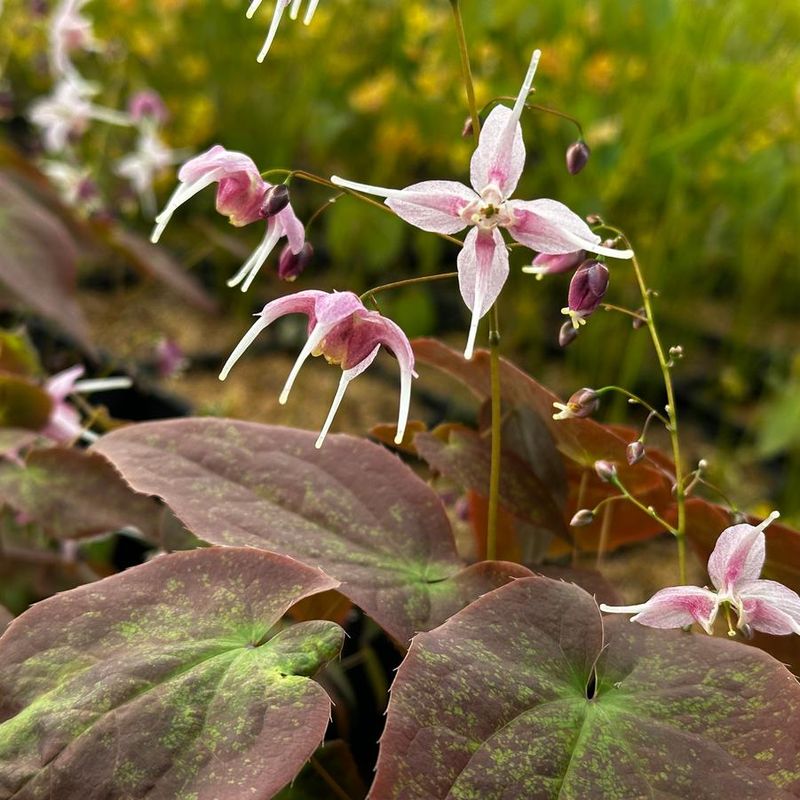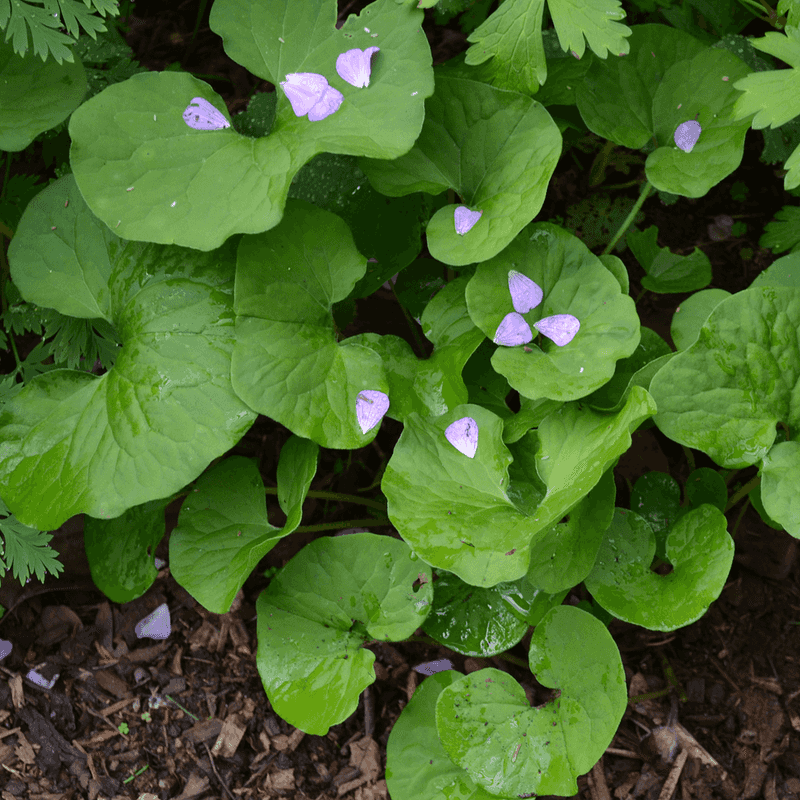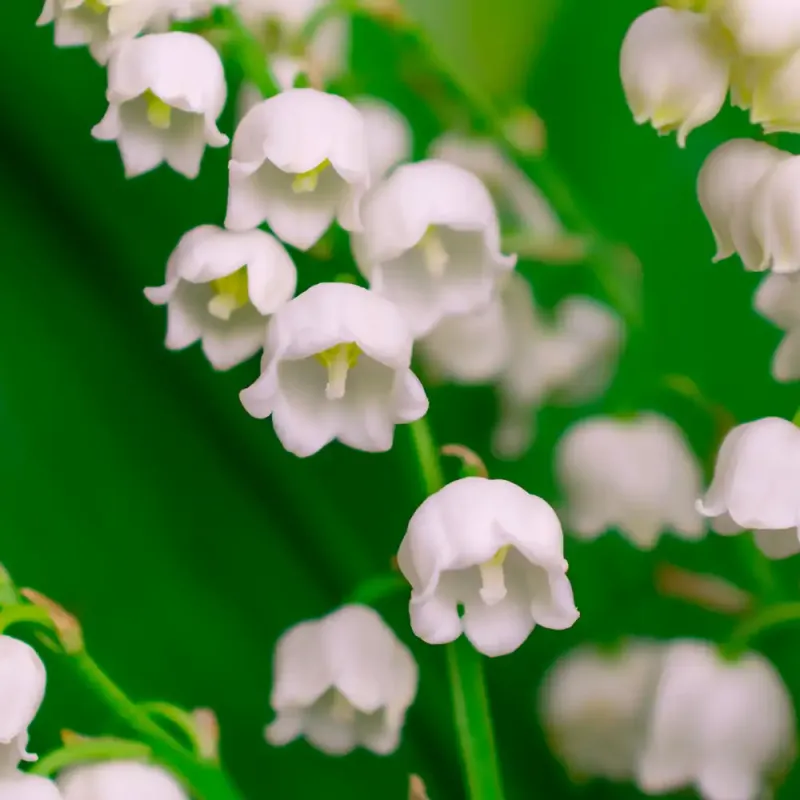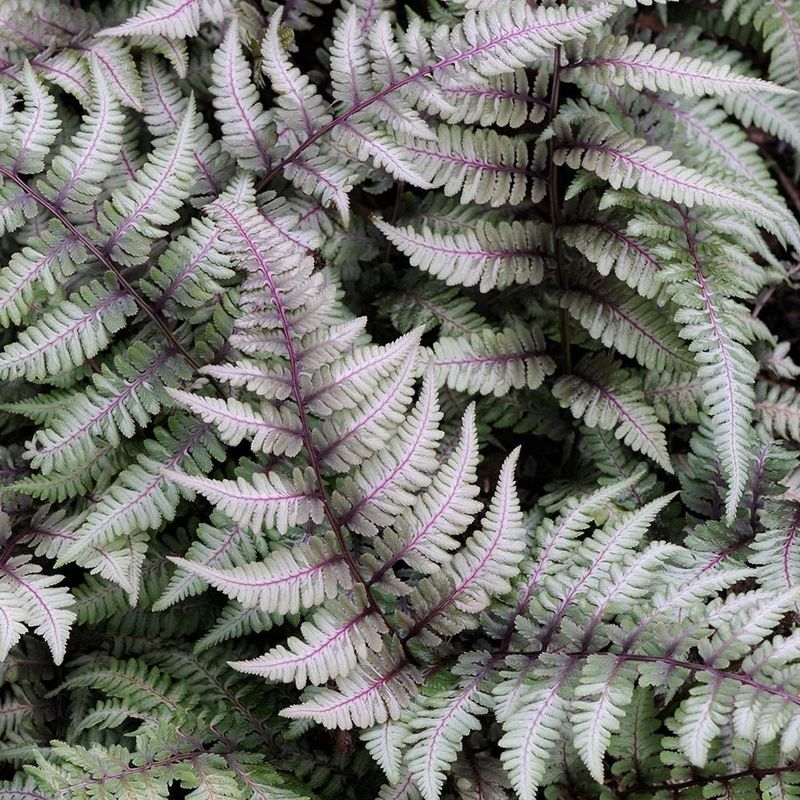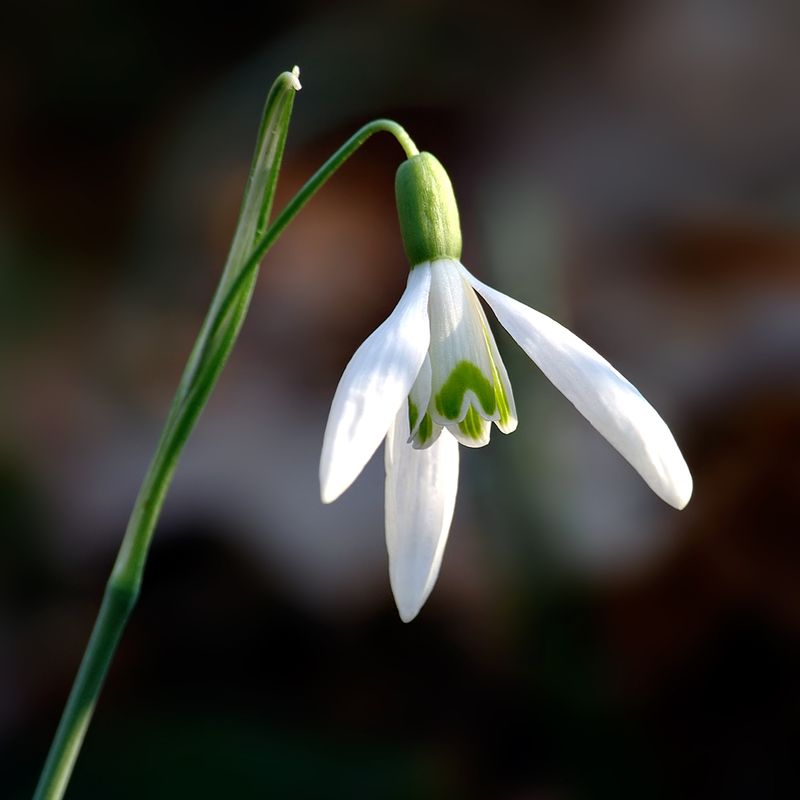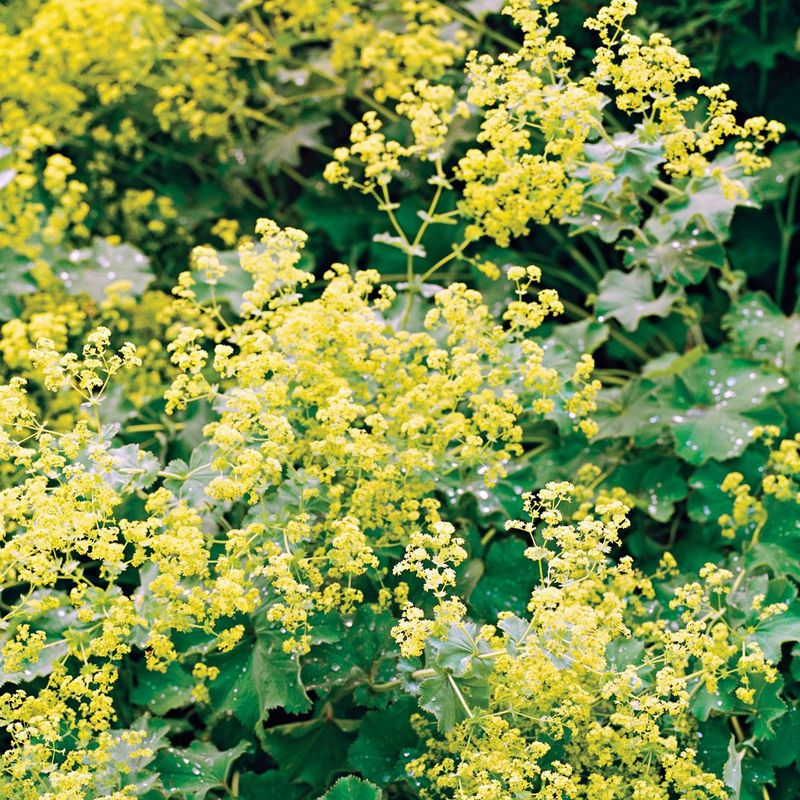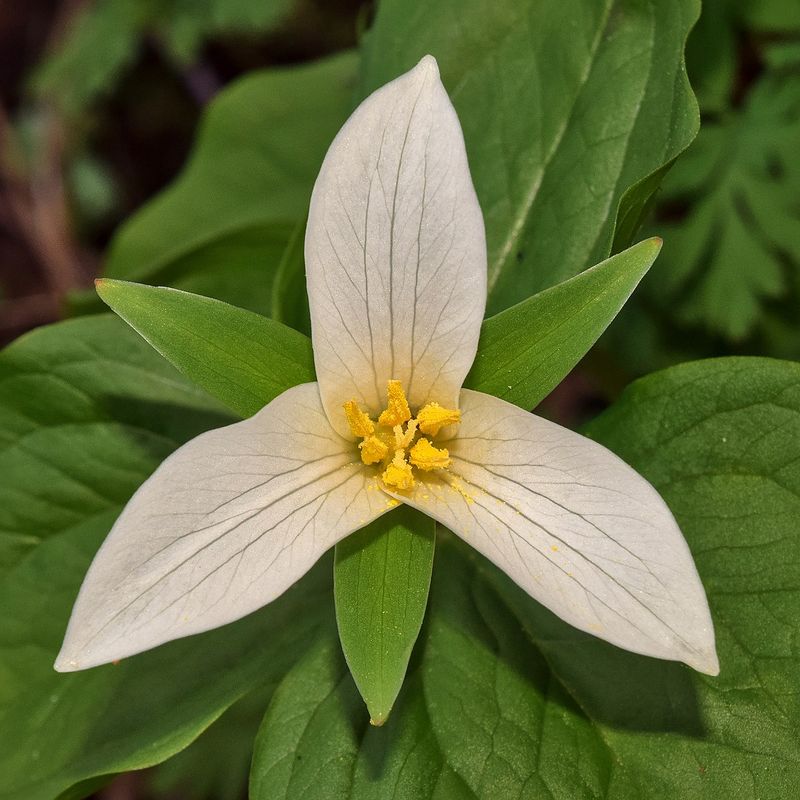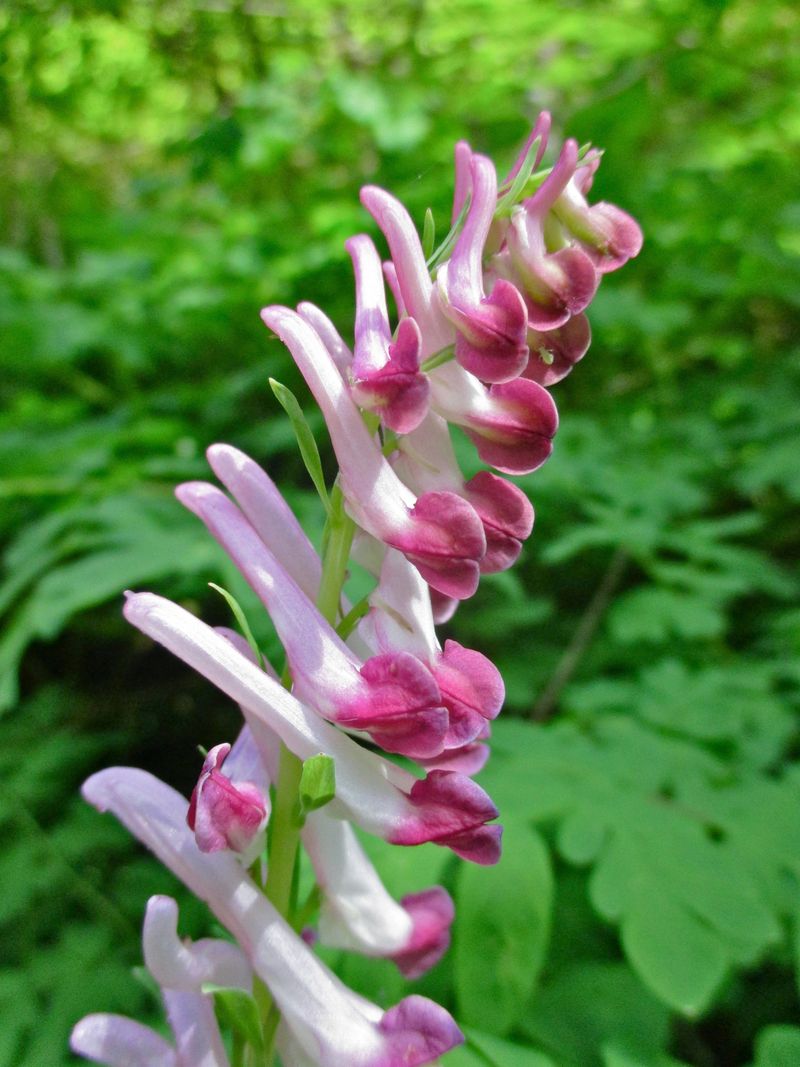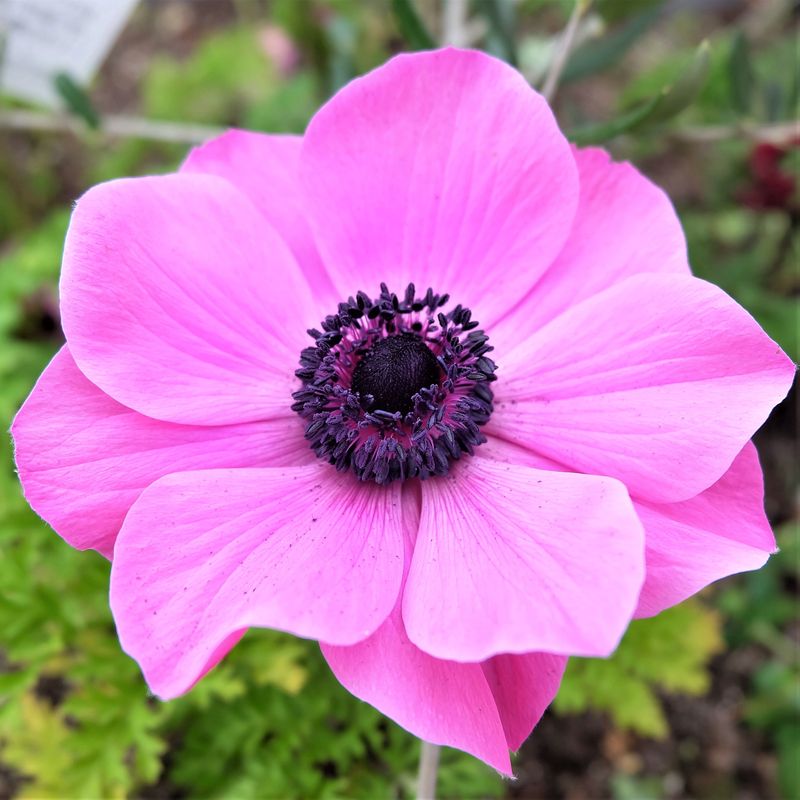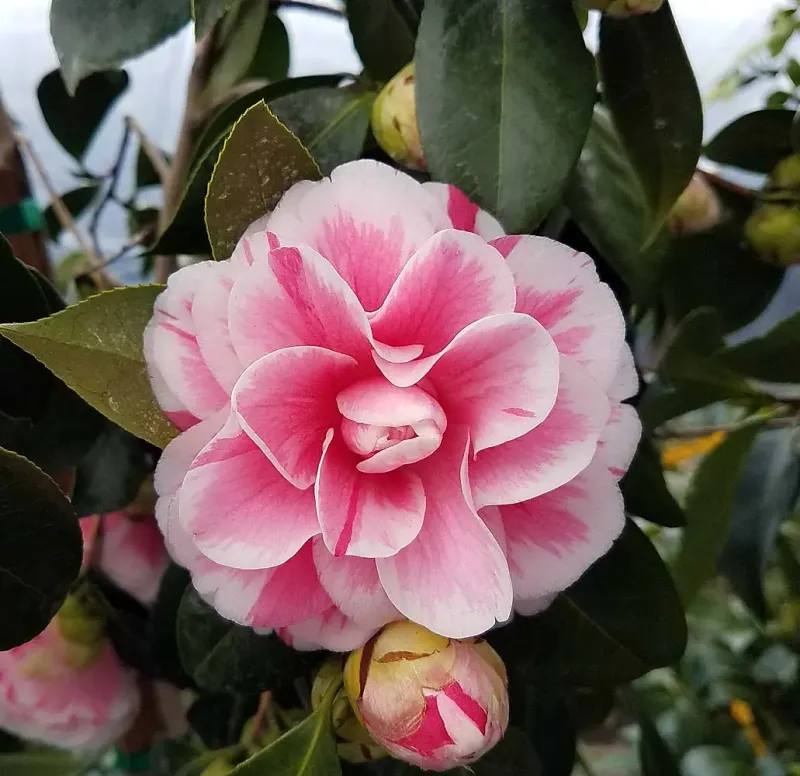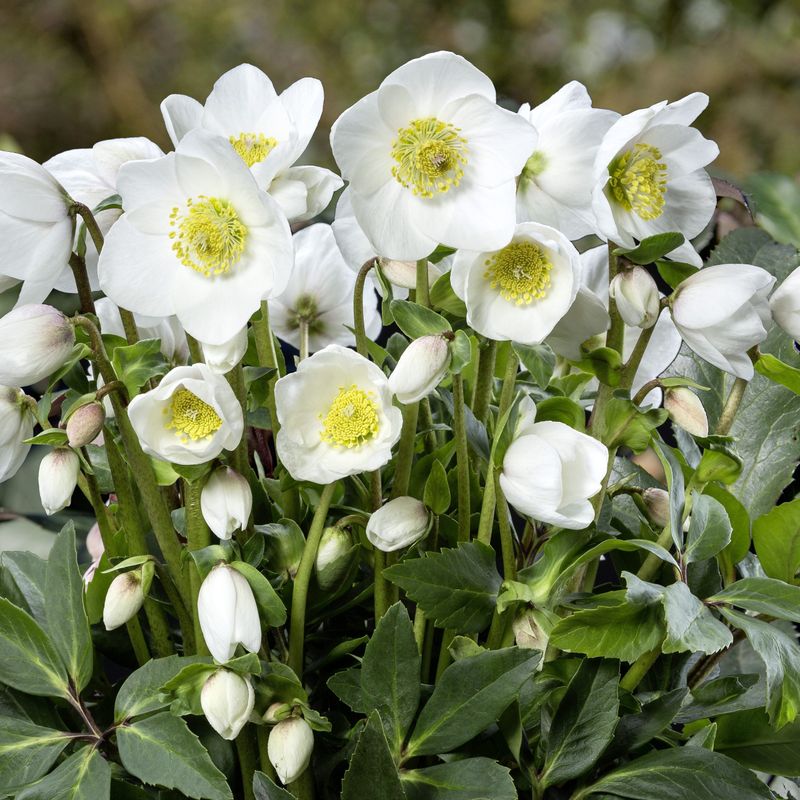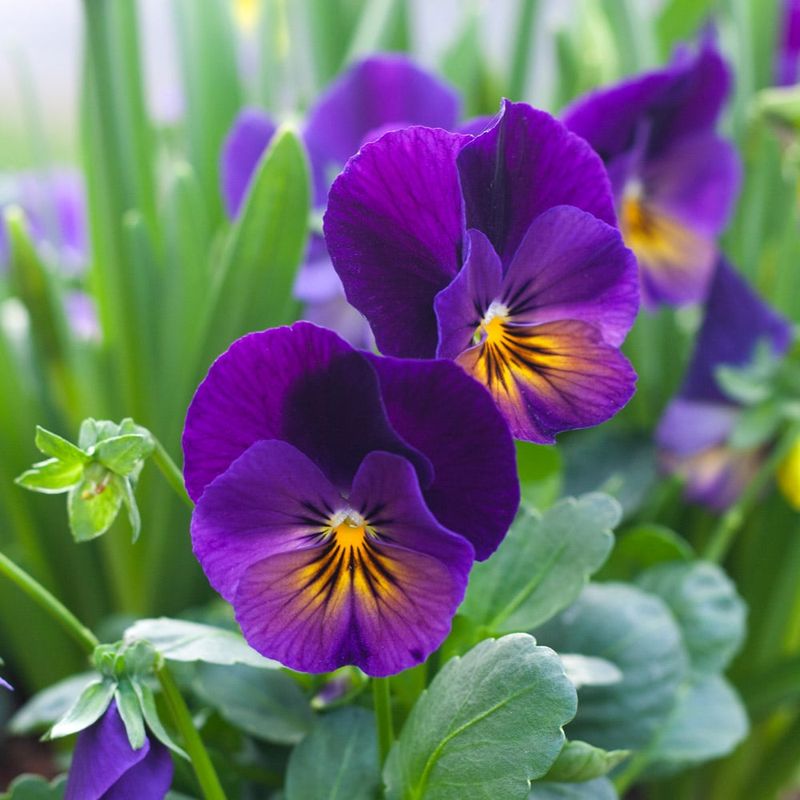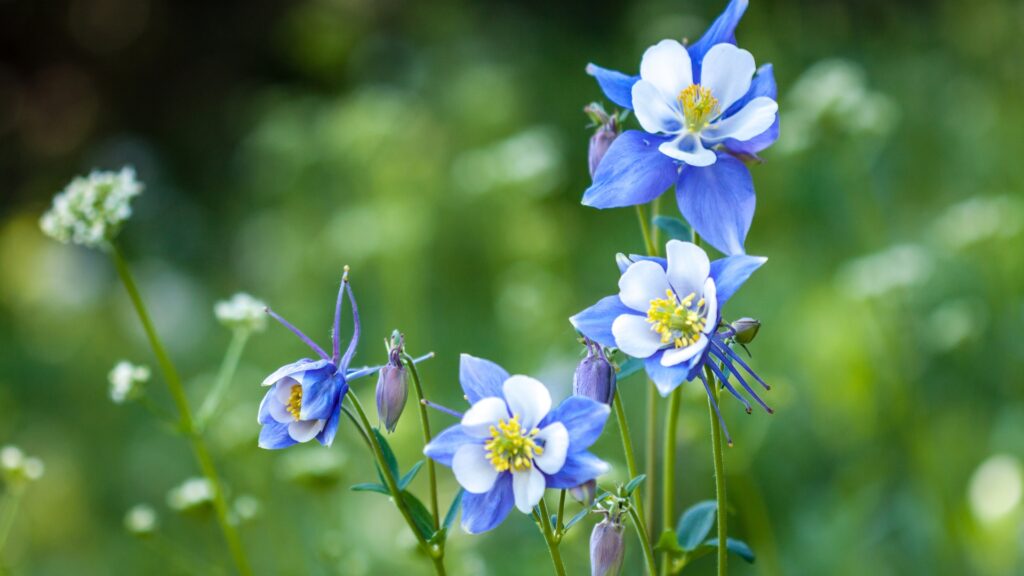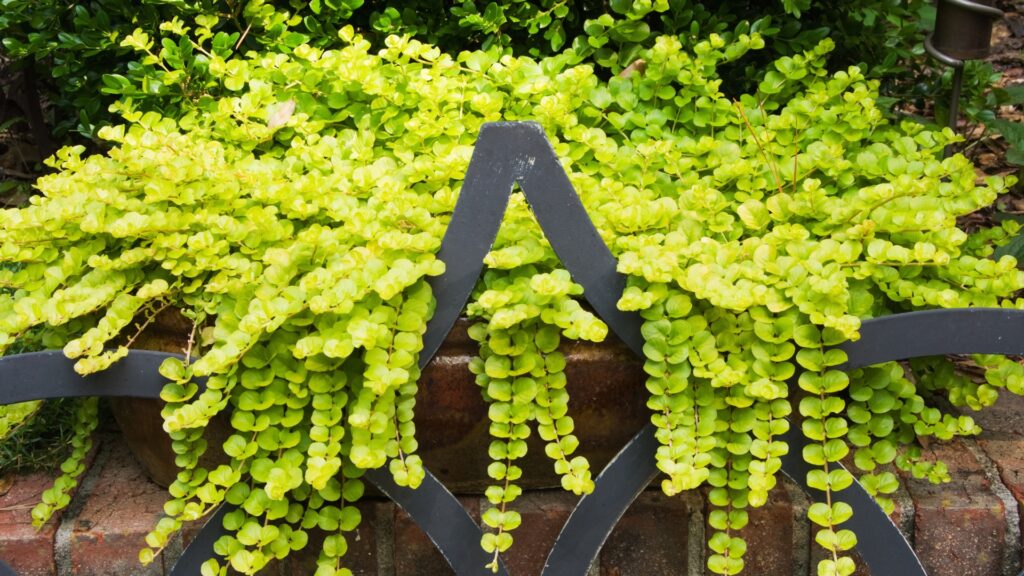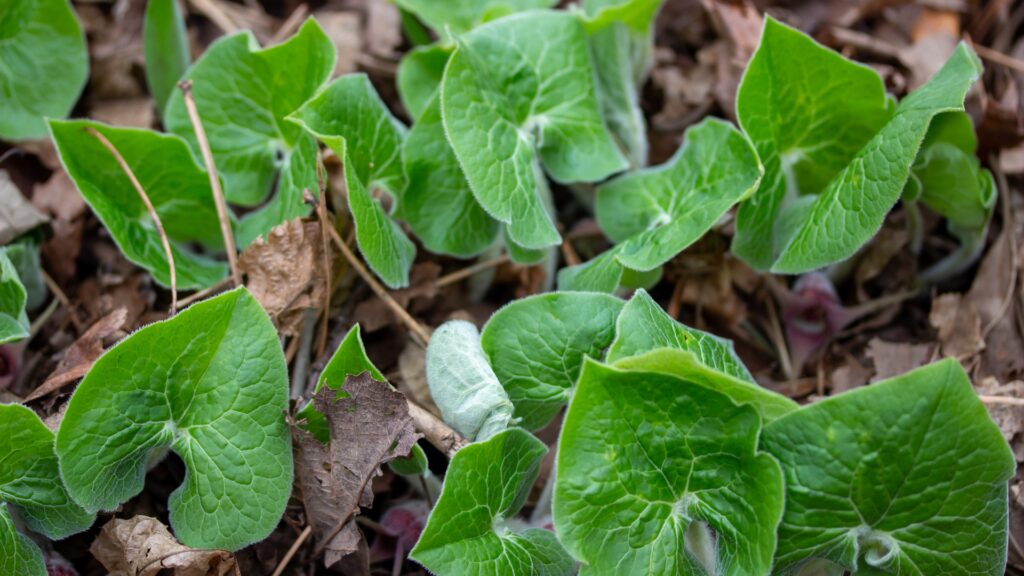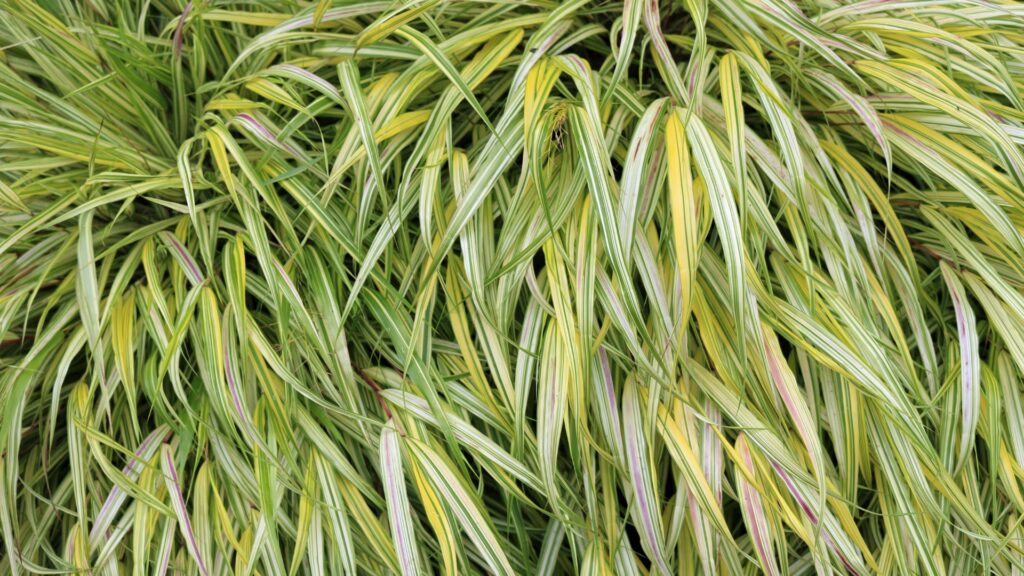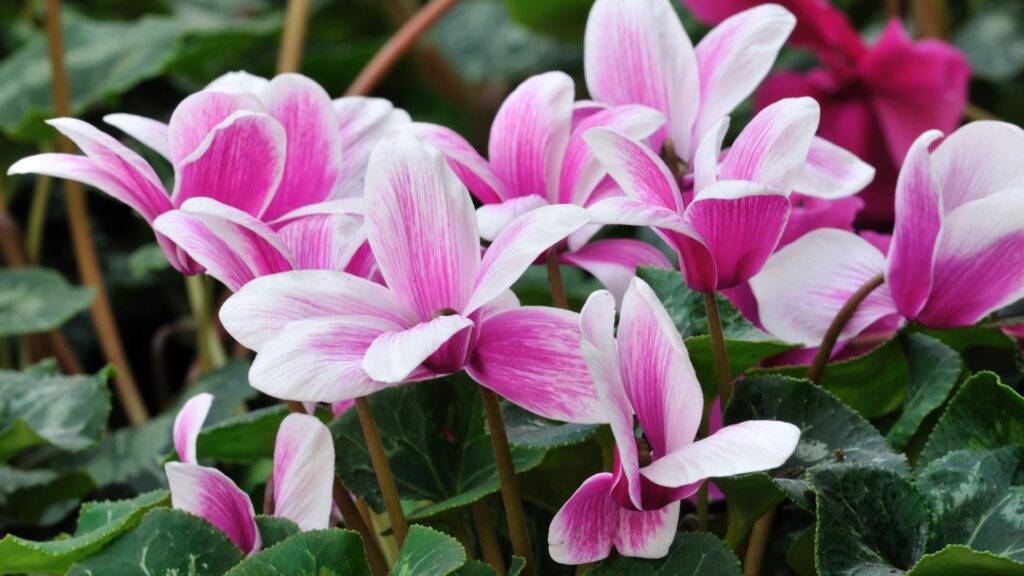Ever find yourself eyeing your hellebores and thinking, “You’re nice, but I’m ready for something new”? I’ve definitely been there—sometimes a plant just doesn’t spark joy anymore, no matter how well it behaves.
That’s when I know it’s time to shake things up a bit. A little garden refresh can go a long way, especially with plants that bring something fun, bold, or totally unexpected to the mix.
From quirky charmers to timeless beauties, these fresh picks are more than ready to steal the spotlight—and maybe even make you fall in love with your garden all over again.
1. Lavender
Picture this: you’re walking through an aromatic dreamscape. Yes, lavender is the star here. Not only is it a feast for the senses, but it also makes a great alternative with its soothing presence.
Lavender offers more than just beauty; its fragrance can calm even the most restless mind. Plus, this plant is versatile enough for both garden beds and potted displays.
And here’s a fun nugget: lavender has been used to promote relaxation for centuries. Time to unwind with some lavender love!
2. Foxglove
Imagine towering spires of color that command attention. That’s foxglove for you. This plant is not only striking but also an excellent choice to replace hellebores with its impressive height.
Each bell-shaped flower seems to hold an air of mystery, adding an enchanting touch to any garden.
While it might look like something out of a fairy tale, be cautious. Those lovely flowers are toxic if ingested. Perfect for creating a cottage garden vibe, foxglove is both magical and practical.
3. Peony
Step aside as the grand dame of the flower world makes her entrance. The peony is here and it’s not shy about stealing the limelight.
Known for its full blooms, the peony is a wonderful alternative. Its opulent flowers create a visual feast that rivals any floral display.
Whether gracing a garden or a dining table, peonies bring elegance with every petal. And if you’re lucky, you might catch a whiff of its sweet scent dancing in the air. Pure floral poetry!
4. Bleeding Heart
Something about those drooping heart-shaped flowers just tugs at the strings. Enter the bleeding heart, a charmer that’s hard to resist.
Its poetic name speaks volumes, and its beauty delivers. As an alternative to hellebores, it adds whimsy and a touch of the dramatic.
Perfect for shady spots, these flowers seem to tell a tale of romance and intrigue. Just watch as they sway gently in the breeze, whispering secrets of the garden. Who said plants can’t be storytellers?
5. Hosta
Picture a sea of lush foliage, each leaf a canvass of intricate patterns. That’s the hosta, a plant that knows how to make a statement without a single bloom.
While it may not boast lively flowers, its leaves are a masterpiece in their own right. An ideal substitute for hellebores, hostas bring texture and color to shaded garden corners.
Plus, they’re low-maintenance, which means more time to enjoy that cup of coffee on the porch. Who needs flowers when you have hostas?
6. Astilbe
There’s a certain allure in those fluffy plumes that astilbe brings to the table. It dances gracefully, much like a ballerina in the garden.
Astilbe’s feathery flowers are a fantastic alternative, offering a soft contrast against lush greenery. Perfect for shady spots, it doesn’t just blend in, it shines.
The best part? Its charm doesn’t require constant attention. So, let your garden pirouette with astilbe, and perhaps even inspire your next dance move!
7. Brunnera
Imagine little blue stars scattered across a canvas of silver. That’s brunnera for you. A plant that knows how to turn heads.
As an alternative to hellebores, brunnera brings both beauty and resilience to the garden. Its heart-shaped leaves offer a unique texture, while the tiny blooms are reminiscent of a night sky.
It’s perfect for those shaded corners where magic seems to linger. And guess what? Butterflies find it just as irresistible. A true garden gem!
8. Pulmonaria
Spotted leaves and a splash of color. That’s pulmonaria in a nutshell. This plant is anything but ordinary, offering a whimsical touch to any garden.
If you’re looking to replace hellebores, pulmonaria’s unique appearance makes it a strong contender. Its dual-colored flowers are a conversation starter, and the spotted foliage adds a playful element.
Plus, it’s a friend to pollinators, making it a garden staple for nature lovers. Who knew plants could be this entertaining?
9. Dicentra
A touch of romance with a hint of nostalgia; that’s what dicentra brings to the garden party. Those heart-shaped blooms are the main attraction.
As an alternative to hellebores, dicentra offers more than just beauty. It’s a plant that thrives in shady spots, adding elegance with its graceful arching stems.
And here’s a fun tidbit: these flowers are often called ‘lady in the bath.’ Intrigued? You should be! Dicentra adds charm and whimsy to any garden.
10. Ferns
Wander into a garden oasis where fronds unfurl like nature’s artwork. Yes, ferns are the unsung heroes of shade gardens.
When considering alternatives to hellebores, ferns are a fantastic choice. Their textured leaves add a touch of wild elegance. Whether in a pot or planted in the ground, they create a serene backdrop.
Plus, they might just be one of the oldest plants on Earth. A true blast from the past for your garden. Time travel, anyone?
11. Primrose
Picture a burst of color heralding the arrival of spring. That’s primrose for you, a plant that knows how to make an entrance.
As an alternative to hellebores, primrose brings joy with its bright blooms. These cheerful flowers thrive in shady spots, making them a delightful addition to any garden.
And here’s a fun fact: primroses have been associated with youth and renewal. So, go ahead and let your garden capture the essence of spring with primrose.
12. Heuchera
A garden with a flair for drama can’t do without heuchera. Its foliage is the star of the show, offering colors that rival any flower.
As a hellebore alternative, heuchera stands out with its leaves and dainty flowers. Perfect for borders or containers, it adds depth and interest to any garden space.
Those leaves can change color with the seasons. Who needs flowers when you have heuchera’s ever-changing charm? A true garden chameleon!
13. Ajuga
Imagine a carpet of foliage with tiny blue jewels peeking through. That’s ajuga for you, a true ground cover champion.
When seeking alternatives to hellebores, ajuga offers beauty and function. Its dense leaves create a lush tapestry, while the flowers are a pleasant surprise.
Perfect for filling in gaps, it requires minimal fuss and can handle foot traffic. Plus, it’s a favorite of pollinators. Ajuga is the garden’s answer to ‘set it and forget it.’ How’s that for convenience?
14. Japanese Anemone
Think of a delicate dance happening right in your garden. That’s the grace of the Japanese anemone.
As an alternative to hellebores, this plant offers elegance with its tall, nodding blooms. Perfect for late summer and fall, it adds a timeless charm to any garden.
And here’s a fun part: they’re often known as ‘windflowers’ due to their gentle sway. So, let your garden become a stage for this elegant performance.
15. Solomon’s Seal
Imagine graceful arches that bring a touch of elegance to garden corners. That’s Solomon’s Seal. A plant that knows how to make an impact.
As a hellebore alternative, it offers charm with its bell-shaped flowers and distinctive foliage. Ideal for shady areas, it requires little to no fuss.
Plus, it’s a favorite of pollinators, making it a win for any garden. If you’re looking for a plant that’s both humble and striking, Solomon’s Seal is the one.
16. Toad Lily
Venture into the realm of the exotic with the toad lily. Its unique appearance is sure to capture curiosity.
As an alternative to hellebores, the toad lily offers something truly special. Its orchid-like blooms are a conversation starter, and the plant thrives in shady spots.
Perfect for adding an unexpected twist to your garden, it’s both intriguing and low-maintenance. And what’s unique about them is toad lilies bloom in the fall, defying the norm.
17. Lungwort
A garden with a dash of whimsy wouldn’t be complete without lungwort. Those spotted leaves are the talk of the garden.
If you’re swapping hellebores, lungwort brings charm and color. Its playful foliage and flowers are a delight in shady spots. Plus, it’s a favorite among bees, adding life to your garden.
Lungwort’s name dates back to medieval times when it was used for medicinal purposes. Talk about a plant with history!
18. Bergenia
In the world of gardening, bergenia makes quite the impression. Its bold leaves and clusters of flowers are hard to miss.
As a hellebore substitute, bergenia offers more than just looks. It’s tough, low-maintenance, and perfect for those less-than-sunny spots.
The flowers add a splash of color, while the leaves provide structure throughout the year. Bergenia is sometimes called ‘pig squeak’ because the leaves make a squeaking noise when rubbed.
19. Epimedium
Imagine a garden where whimsy meets elegance. Epimedium, with its delicate flowers and foliage, fits right in.
Seeking alternatives to hellebores? Epimedium is a strong contender. Its flowers bring a touch of magic, and the plant thrives in shady settings.
Perfect for adding texture and interest, it’s both beautiful and easy to care for. Epimedium is sometimes called ‘bishop’s hat’ due to the shape of its flowers. A garden’s little secret!
20. Wild Ginger
Step into a woodland wonderland with wild ginger. Its heart-shaped leaves create a lush carpet beneath tall trees.
As an alternative to hellebores, wild ginger brings both beauty and function. Its foliage adds depth to shaded areas, while the small flowers are a hidden gem.
Perfect as ground cover, it requires minimal care. And what’s fun about them is that wild ginger’s roots have a spicy aroma when crushed.
21. Lily of the Valley
Think of a garden where simplicity reigns supreme. Lily of the valley, with its dainty blooms, captures that essence perfectly.
As a hellebore alternative, it offers elegance with its sweet-scented flowers. Perfect for shady spots, it adds a touch of grace to any garden corner.
And here’s a charming tidbit: it’s often associated with happiness and renewal. So, let your garden be filled with joy and gentle whispers.
22. Japanese Painted Fern
A touch of the exotic with a hint of mystery. Japanese painted fern knows how to intrigue. Its silvery fronds are a visual delight.
If you’re considering alternatives to hellebores, this fern offers something unique. Perfect for shady areas, it adds texture and color without fuss.
Its name comes from the striking color patterns that resemble a painted masterpiece. An artistic addition to any garden!
23. Snowdrop
The first sign of spring often manifests in the form of snowdrops. Their nodding heads are a promise of warmer days.
As an alternative to hellebores, snowdrops offer simplicity and charm. Perfect for early blooms, they thrive in cool, shaded spots.
Snowdrops have been symbols of hope and purity for centuries. Let them bring a breath of fresh air into your garden, heralding new beginnings.
24. Lady’s Mantle
Gardens with a touch of magic often feature lady’s mantle. Those leaves catch raindrops like nature’s jewels.
If you’re swapping out hellebores, lady’s mantle offers beauty and intrigue. Its scalloped leaves and delicate flowers thrive in shaded areas, adding a touch of enchantment.
Interesting fact about it is that the plant was once believed to have mystical properties. A garden’s own little secret!
25. Trillium
Venture into a woodland setting where trillium reigns supreme. Its elegant three-petaled flowers are a sight to behold.
As an alternative to hellebores, trillium brings grace and beauty to shaded areas. Perfect for naturalizing, it adds a touch of wilderness to your garden.
Trilliums are protected in some areas, so they bring a sense of exclusivity. A garden treasure worth preserving!
26. Corydalis
A touch of blue in a garden oasis. Enter corydalis. Its fern-like leaves and tubular flowers are an eye-catching combination.
Looking for alternatives to hellebores? Corydalis offers beauty and intrigue. Perfect for shaded rock gardens, it adds texture and color.
Some corydalis species have been used in traditional medicine. A plant that’s both fascinating and functional.
27. Anemone
A garden with anemones is a garden with joy. Their daisy-like blooms are a cheerful addition to any landscape.
As a hellebore alternative, anemones bring color and life to shaded spots. Perfect for late-season interest, they add a playful touch.
Fun fact: anemones are often associated with anticipation. Let them fill your garden with excitement and wonder.
28. Camellia
A touch of elegance and a hint of romance, camellias know how to captivate. Their rose-like blooms are a garden’s crown jewels.
As an alternative to hellebores, camellias offer beauty and charm. Perfect for shaded areas, they add a touch of sophistication.
Camellias have been symbols of love and admiration. Let them whisper sweet nothings in your garden.
29. Forget-Me-Not
In a garden filled with memories, forget-me-nots hold a special place. Their delicate blue flowers are a gentle reminder.
As a hellebore alternative, they offer simplicity and beauty. Perfect for shady spots, they add a touch of nostalgia.
These beautiful flowers are often associated with love and remembrance. Let them keep your garden’s memories alive.
30. Helleborus Niger
A garden’s winter wonderland wouldn’t be complete without helleborus niger. Its pure white blooms are a sight to behold.
As an alternative to traditional hellebores, helleborus niger offers beauty and resilience. Perfect for winter interest, it adds a touch of purity to the garden.
Fun fact about it is that it’s often called the ‘Christmas rose.’ Let it bring a dash of winter magic to your outdoor space.
31. Viola
Step into a world of color with violas. Their dainty blooms are a garden’s little treasures.
Looking for alternatives to hellebores? Violas offer charm and versatility. Perfect for shaded areas, they add a playful touch.
And here’s a sweet tidbit: violas are often known as ‘heartsease.’ Let them bring a touch of joy and tranquility to your garden. A plant that truly soothes the soul!
32. Columbine
Like a garden’s flirtatious wink, columbine steps onto the scene with its nodding, spurred blooms that look straight out of a fairytale.
As an alternative to hellebores, columbine brings airy charm and whimsy. Thriving in partial shade, it offers a burst of color just when your garden needs a lift.
And here’s a fun little twist: columbine flowers are favorites among hummingbirds. So, plant a few and watch the magic flutter in.
33. Creeping Jenny
Imagine a cascade of golden green tumbling from pots or creeping across the soil like living sunshine. That’s creeping Jenny—small name, big impact.
Swapping hellebores for this ground-hugger brings a whole new level of texture and brightness. Perfect for shady nooks or around stepping stones, it softens edges with effortless style.
And fun fact: its botanical name Lysimachia comes from a Macedonian king said to have used the plant to calm a raging bull. Now that’s plant power!
34. Canadian Wild Ginger
Tucked beneath the shade with a quiet confidence, Canadian wild ginger offers a lush, low-growing presence that’s as grounding as it is gorgeous.
As a hellebore alternative, it shines with its heart-shaped leaves and hidden, cup-shaped maroon flowers. It’s the kind of plant that reveals its charm slowly—perfect for those who like a little mystery in the garden.
Fun fact: despite its name, it’s not the ginger you’d use in the kitchen. But it sure knows how to spice up a shady corner with elegance!
35. Japanese Forest Grass
Swaying gently like a whisper in the wind, Japanese forest grass brings movement and texture to shaded gardens. Its cascading blades offer a soft, golden glow.
As an alternative to hellebores, it creates a sense of calm with its graceful form. Whether tucked along a path or spilling from a container, this ornamental grass adds serenity to any space.
And here’s a zen thought: it’s a favorite in Japanese-style gardens for a reason—this plant is pure peaceful poetry in motion.
36. Cyclamen
Delicate, whimsical, and downright charming—cyclamen brings a whole new level of grace to shady spots.
If you’re on the lookout for a hellebore alternative, cyclamen’s upswept petals and patterned leaves deliver elegance in spades. Its blooms often appear in late winter or early spring, just when your garden craves color the most.
And here’s a sweet surprise: many varieties go dormant in summer and return like clockwork when the weather cools. A quiet little miracle, year after year.

